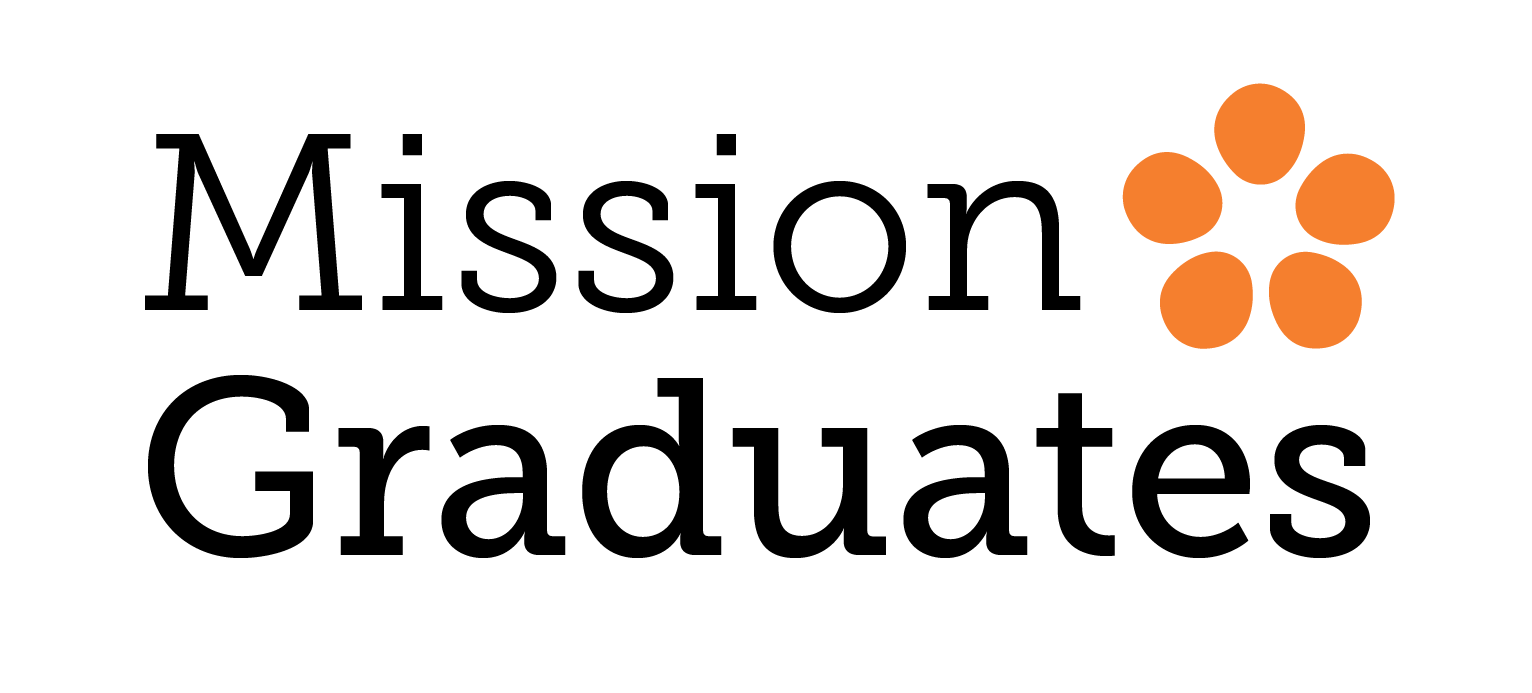Almost 30 years ago, the Yerba Buena Center for the Arts (YBCA) opened in the SOMA District of San Francisco, reimagining how artists engage with social and cultural movements.
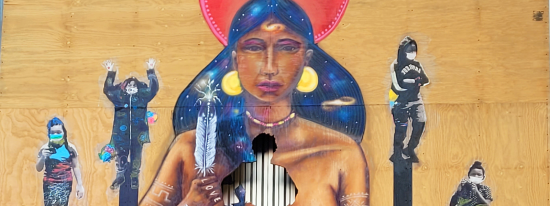
YBCA today continues to center artists and installations at the heart of cultural movements. During the COVID-19 pandemic, the institution has remained committed to this vision and has even expanded their community engagement. In addition to their arts-focused mission, YBCA now serves as the site for Mission Graduates’ Community Hub, which provides in-person support and art enrichment for students from Bessie Carmichael Beacon who are most at-risk of falling behind in distance learning.
Local artist Caleb Duarte designed and started a new installation at the YBCA in October, titled “The Monument as Living Memory.” Over the subsequent 18 weeks, Bay Area artists and collectives have collaborated and will continue to transform the piece by adding contributions that respond to current events.
As shelter-in-place orders forced many of us inside, drastically changing the visual and cultural landscape of the city, artists like Duarte saw an opportunity to draw upon increasingly familiar symbols and ideas to spur conversations around the closure of cities, civic engagement, and social justice.
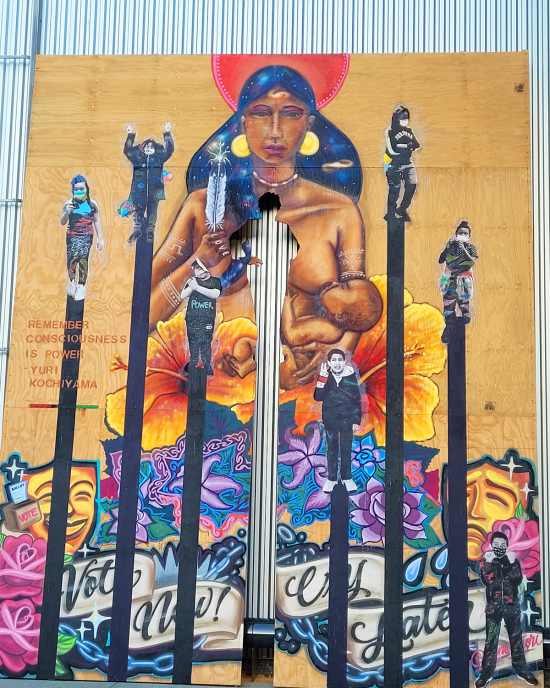
Duarte began this project by erecting a 20-foot plywood covering in a public space, just outside the main entrance to the Yerba Buena Center for the Arts. These plywood coverings, similar to those erected on storefronts in anticipation of the property damage that sometimes accompanies public demonstrations, remind viewers of the social and economic effects of COVID-19.
In the latest addition to Duarte’s collaborative piece, YBCA Teaching Artist Fredericko Alvarado and our 3rd-5th grade students from the Community Hub added their own creations to Duarte’s evolving work, teaching the students how monuments create history.
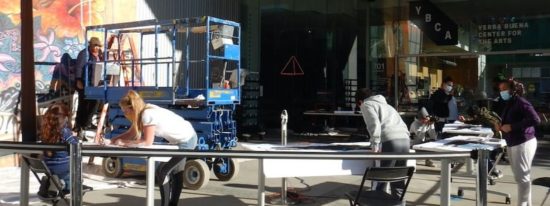
With guidance from Alvarado, students learned about monuments and figurative poses. They then took digital pictures of each other in different poses. Finally, their selected images were printed and adhered to the plywood to add new visual and ideological dimensions to the monument.
As part of the art enrichment generously organized by the YBCA, our students learned the significance of monuments in the public space and reclaimed a monument to tell their own stories.
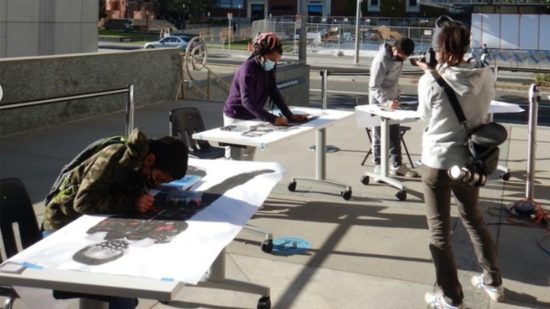
Additional components of the work, visible at the time of Alvarado’s and our students’ contributions, recall significant cultural and social events from the past few months.
The cutout silhouette in the middle of the panel, added by Duarte, depicts politician and voting rights activist Stacey Abrams. Abrams is best known for founding Fair Fight Action in 2018, an organization dedicated to protecting and increasing access to voting and voter registration in the United States. She and her organization have been largely credited with encouraging record voting turnout, particularly in Georgia, during the 2020 election.
In the lower portion of the panels, Irene Shiori, a tattoo artist and activist, airbrushed text reading “Vote Now, Cry Later” on the eve of the 2020 presidential election. This quote, drawing on a visual style that references Chicanx-style tattoo art, recalls the Chicanx quote “smile now, cry later.” While originally taken from Greek mythology, it has now been popularized by incarcerated tattoo artists and captures the idea of life as both a tragedy and a comedy.
Artist and activist David Petrelli contributed a quote from political activist Yuri Kochiyama in the upper left paneling – it reads “remember consciousness is power.” Yuri dedicated her life to contributing to social change through her participation in social justice and human rights movements.
Most prominently featured at the top of the panel is a visual representation of the collective trauma and anxieties that we all faced during the 2020 election. Self-taught muralist, visual artist, and activist Pancho Pescador draws upon elements of magical realism to create the image of an indigenous mother. Pescador views the mother as a conduit for trauma, allowing us to channel our struggles into healing while bringing life to something new.
Rich with symbolism, this monument serves as a stark testament to the lessons from 2020 and a reminder of our collective responsibilities moving forward.
Viewers can see the future iterations of Duarte’s “The Monument as Living Memory” near the Mission Street entrance of the Yerba Buena Center for the Arts from now until March 2021.
